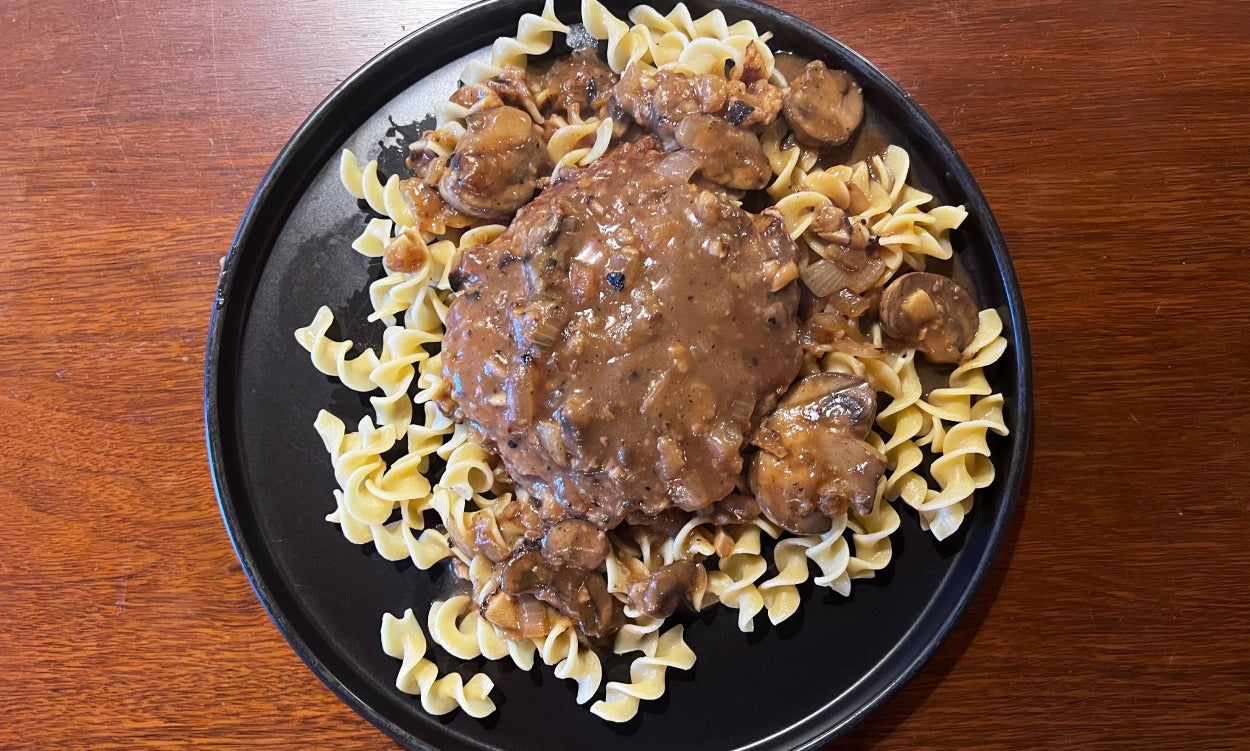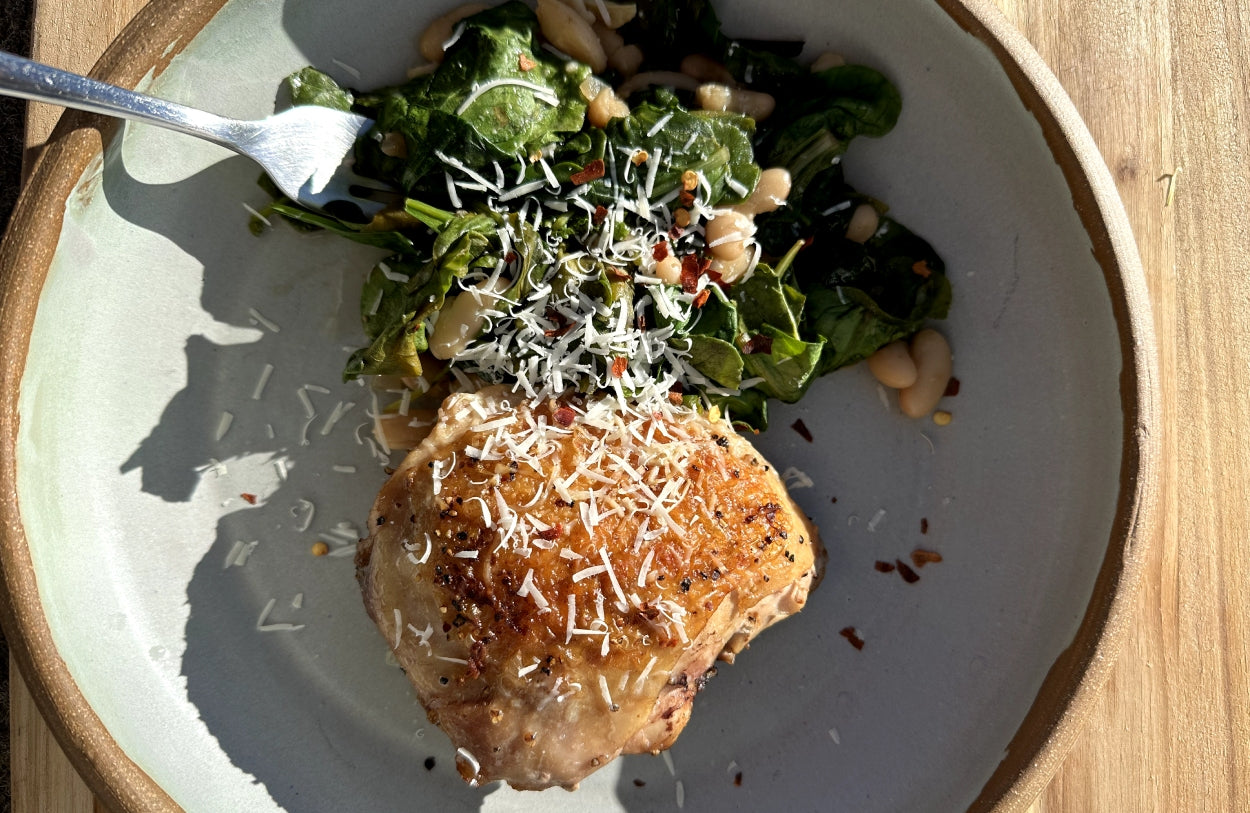Want to save the Monarch butterfly? Support a better kind of farming.

Turns out, Monarch butterflies are far more fragile than anyone ever imagined. These seemingly fearless flyers—known for their spectacular 2,500-mile journey across the Americas—are now disappearing at a truly alarming rate. Just ten years ago, these stunning butterflies filled our gardens each summer with a gossamer profusion of orange and black. Today, Monarch populations have declined by 72% or more. Small wonder Monarchs just earned the dubious title: endangered on the species ‘red list.’
The U.S. Geological Survey estimates a 60% chance the Monarch’s spectacular, multigenerational migration in the eastern half of the country could completely collapse within the next 20 years. More alarming, the western Monarch population that winters in California has collapsed by nearly 99.4% and could disappear in a few short years. Tragically, last year one Pacific Grove site did not have a single Monarch butterfly return.
Monarchs aren’t the first pollinators to need our help
There are so many issues facing delicate creatures like the Monarch butterfly. Sadly, they’re many of the same challenges faced by so many pollinators. Top of the “most dangerous list” are neonicotinoid pesticides, industrial farming practices, and of course the big one: global climate change. And this is not the first time we’re hearing about pollinators in peril.
Remember Colony Collapse Disorder? According to the EPA, winter 2006-2007 beekeepers began seeing strange bee activity among their colonies. This included the sudden loss of the colony’s worker bees — and between 30 and 90 percent of their hives were affected. The queen and brood (young bees) remained safe in the hive— but where were the worker bees? Even stranger: there were very few dead worker bees found near the hive/colony. It was a real Sherlock Holmes moment. But also, terrifying. Because hives cannot sustain themselves without worker bees. Beekeepers knew the entire colony would die, soon. Sadly, 2015 a Bee Informed Partnership survey didn’t tell a much better story. Managed honeybee colonies experienced 42.1% losses for the 2014-2015 year.
Some good news: the Federal Government has had plans to support pollinators in the works since 2014. Legislation to promote the health of honeybee and other pollinator habitat, with plans to restore/enhance 7 million acres of land over the next 5 years through Federal actions and public/private partnerships.
“I have to say that it is mighty darn lovely having the White House acknowledge the indigenous, unpaid and invisible workforce that somehow has managed to sustain all terrestrial life without health-care subsidies, or a single COLA, for that past 250 million years,” said Sam Droege, a U.S. Geological Survey wildlife biologist and one of the country’s foremost experts on native bee identification.
Why Monarch Butterflies and other pollinators matter so much?
Believe it or not, pollinators are actually economic power-houses. Here in the United States, pollinators contribute to the economy by keeping flowering plants like fruits, nuts, and vegetables, well…pollinated. The honeybee pollination alone adds more than $15 billion in value to agricultural crops each year in the United States.
Pollinators like Monarch butterflies pick-up pollen when they sip a flowering plant’s nectar. They visit one plant then they're off to another. The pollen goes with them. It’s amazing to think that one third of the food we eat depends on the work of pollinators like butterflies. Of course, pollinators come in all shapes and sizes —bet you didn’t know the black-and-white ruffed lemur is the largest pollinator in the world at 6.4 lbs. The smallest pollinator is a bee called Perdita Minima, it’s slightly less than two millimeters long. What an amazing world we live in. Let’s start doing a better job of protecting it.
By building healthy, bio-diverse farms, Grass Roots Farmers’ Co-op supports the work of vital pollinators. We're doing our part to ensure the sustainability of highly functional and productive food chains. And healthier, bio-diverse ecosystems are also among the most abundant, yielding some of the most nutrient dense foods on the planet. Perfect for protecting the health of the environment.
Doing our part for pollinators: Regenerative farming since 2014
The folks who came together to create Grass Roots made a commitment a long time ago to build bio-diverse environments that protect all pollinators, including the Monarch butterfly.
When we first came up with the Grass Roots concept, we knew we’d need some help getting started—enter Heifer USA. They taught us the best practices for starting a farmers’ cooperative. Through training and education they showed us how to make regenerative farming profitable. Today, the 40+ tiny - to medium-sized farms (that make up Grass Roots) have a reliable e-commerce platform to sell products. Our farmers earn a living wage for what they do, fueling economically depressed rural communities (hard hit by industrial farming monopolies).
The principles Dan West began outlining all the way back in 1944 still hold good. His philosophy inspires Heifer today. They partner with farmers working with a whole range of different crops and livestock. Heifer creates unique solutions to local challenges. But the goal is simple: Build inclusive, resilient economies, so communities can develop effective ways to end global hunger and poverty in a sustainable way. The work Heifer USA does is critical to helping small-scale American farmers lift themselves out of poverty. For Grass Roots it means fostering regenerative farming, bio-diverse environments, and supporting habitat for much needed pollinators like the Monarch Butterfly. Small wonder, new farms join Grass Roots all the time with more tasty products for you to try. Like amazing Martin Farm, Farm on Mill Creek, Falling Sky Farms, The Other Side Farm, Uturn Farm, Freeman Ranch and partner farms like Back Forty Bison.
Welcome: Monarch butterflies, bugs, birds, good bacteria, and more.
We’re already using a better way to farm the land. It’s manageable, ethical, sustainable, and butterflies love it. Regenerative farming is an amazing way to reverse the harm done by years of industrialized farming and toxic pesticide use.
At Grass Roots we think of ourselves as land stewards, we work the land in a way that promotes the bio-diversity and harmony found in healthy, highly functional ecosystems. Our plan for protecting pollinators like the Monarch butterfly includes no-till planting for our non-gmo fields. We balance weed management needs with monarch conservation needs. We work to combat grassland and habitat degradation —something that’s devastated grassland butterflies, birds and other creatures for the past half century.
The journal “Science” published a study in 2021 that showed warming climates have also played a role in the decline of butterflies. At Grass Roots Farmers’ Co-op we us native grasses and other plants as forage increases the way our pastures sequester carbon, and that helps mitigate the effects of climate change.
We also prohibit the use of neonicotinoid pesticides (that protects against contamination of waterways). Our farming methods improve the functions of the hydrological cycle. In simple terms, that means our farming techniques help the occurrence, circulation, distribution, and chemical and physical properties of water on the surface of the land, in the soil, underlying rocks, and in the atmosphere. It’s about water's interaction with the environment— including its relation to living things. So, our farming methods also give pollinators like the Monarch butterfly and other creatures a reliable source of fresh, clean, water. Pretty cool, huh?
Today, many Grass Roots farmers work with groups like Audubon [link to Audubon] and Savory Institute [link to Savory Institute} and Land to Market. They encourage development of market-based conservation and biodiversity, with incentives for good grassland stewardship. Together, we encourage grassland conservation and reintroduce important Monarch habitat back into America's prairies. It’s a beautifully simple arrangement.
Happy butterflies. Happy earth — it doesn’t stop there.
This is about happy farming communities, too. Think of cooperative farming like a nutrient cycle—one that keeps farmers and communities thriving—right along with butterflies, other insects, and animals. Because Grass Roots farmers earn a living wage they can put more back into their communities. Now when you shop Grass Roots you’re supporting an agricultural system that puts a priority on raising food with honor. And one that revitalizes rural communities.
There’s never been a tastier way to do the right thing.
Now you know how well we farm, you should really discover how good our meats taste. From beautifully-marbled grass-fed steak and tender, flavorful grass-fed bison, to forest-raised pork, frenched rack of lamb, and plump chicken or turkey you’ll find everything Grass Roots sells is perfectly delicious — all 100% pasture raised. No hormones. No antibiotics. Regeneratively farmed in the U.S.A.
From responsible and sustainable farming practices to environmentally conscientious shipping materials —we are always focused on doing the right thing for future generations and the planet. Learn more about what we’re doing right here.
So next time someone mentions the plight of the Monarch butterfly or another creature threatened by industrial farming practices, tell them about Grass Roots and how regenerative farming produces bio-diverse environments perfect for endangered butterflies and creatures of all kinds. In fact, why not tell everyone you know: There’s never been a tastier way to do the right thing.
Recent Posts






